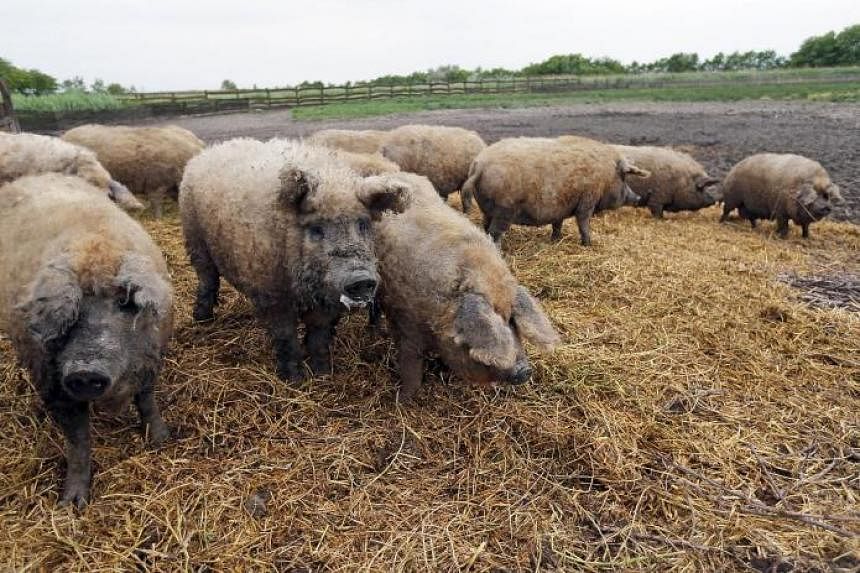Gyomaendrod, Hungary - Far from the glitzy restaurants in Budapest, in muddy stalls in the Hungarian plains, ancient-looking hairy pigs promise to help transform the cuisine of the country and, possibly, the world.
The mangalica pig was once ubiquitous, kept mostly for its massive layers of fat. It almost went extinct as pork production was industrialised during the communist era, when other pig species that produced more meat squeezed it out.
Since 1989, a small group of breeders has saved all four mangalica varietals. The black version, thought extinct until recently, was the last to be rescued.
A few dozen black mangalicas now root around at a Gyomaendrod pig farm. Their genes fill the last missing spots in the mangalica breed.
"We are just about done saving the mangalica," said Mr Peter Toth, the breeder who has led the effort. He also plans to boost the mangalica's commercial use, raising its numbers several times over from about 10,000 sows now.
"It's a good beginning," he said. "We need to eat it to save it. If we don't eat mangalica, it will disappear again."
His timing could hardly be better. World markets pick up high-quality organic foods in a snap and Hungarian cuisine - full of paprika-infused heavy dishes popularised during the communist era - is rediscovering its roots.
In this renaissance, fat is no longer a hindrance - it is a selling point.
Mangalica fat is so soft that it is easy to poke a naked finger through it and it infuses the pork with such taste that chefs compare it with the best Spanish hams.
"It is really good and its main feature is the fat," said head chef Lajos Biro of Bock Bisztro, a Budapest restaurant. "Mangalica is somewhere between the Spanish Serrano and Iberico hams in quality."
Hungary's first Michelin-starred restaurant Costes has used mangalica for years, although international demand is now so strong that it often has to buy its meat from Austria instead of Hungary.
"When I came to Hungary seven years ago, the first thing they told me was you need to try this," Costes chef Miguel Rocha Vieira said as he prepared a mangalica dish recently.
He served it with seasonal green peas and fava beans, melting a thin layer of mangalica fat on top of the greens with a blow torch.
"People tend to say you cannot serve pink pork," he said. "Look at this piece. It's pink. You control the temperature, and with the fat content, this is a beautiful dish."
Reuters

